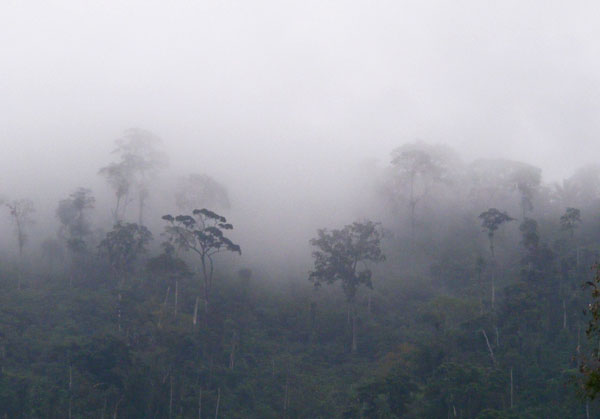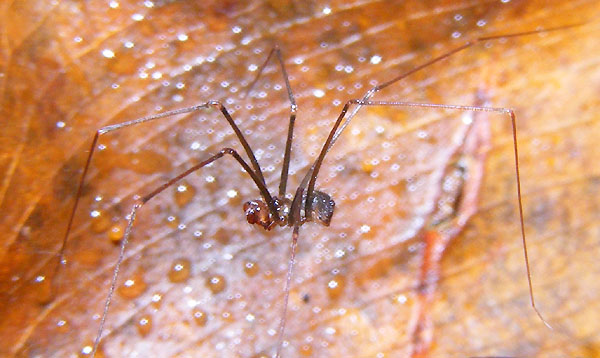In
September and October 2010 I visited the
Brazilian
Atlantic
Forest for
the fourth time in order to expand on a long-term project on the
diversity and
endemism
of pholcids in this extraordinary biodiversity hotspot. Previous trips (2003, 2007, 2009) had revealed
unusually high numbers of species at any locality and little
species overlap among localities (Huber
& Rheims 2011). In combination with the facts that
only about
7% of the Atlantic Forest are left and that most of the forest
fragments are
relatively easily accessible, this explains why the area is extremely
interesting for
any study of the origin and maintenance of biodiversity.

Together with Janael Ricetti I first explored two localities in
Paraná state (Serro e Gemido and Fazenda Rio Grande), both near
Curitiba. However, species diversity was surprisingly low, so we
continued further south to Reserva Volta Velha in Santa Catarina, a
well preserved forest at sea level. Even here, seven pholcid species
was all we could find, suggesting that extremely high numbers (>10)
are limited to forests closer to the Equator.
The second part of the trip was
devoted to two forests in Rio de Janeiro and Espirito Santo states: a
forest near Santa Maria
Madalena (foto above), and a forest near Vargem Alta (foto below).


A new litter-dwelling species of the genus Mesabolivar from Reserva Volta Velha.

I am very thankful to Janael Ricetti (below, left, with Darlene) and Abel Pérez González for preparing this trip and for accompanying me in the field. Thanks is also due to the Alexander Koenig Stiftung for financing the trip.
